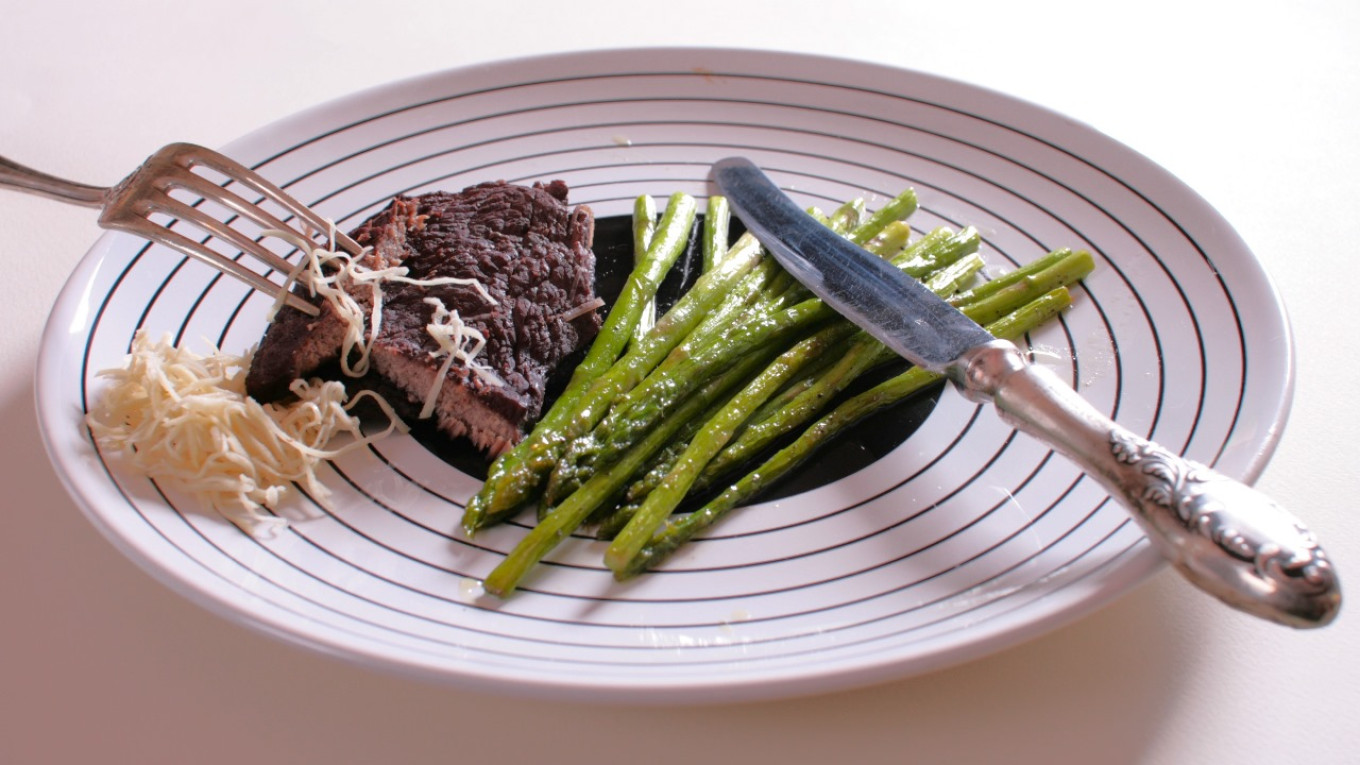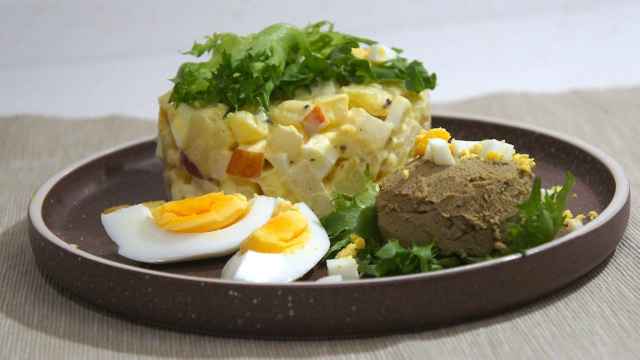What condiment can you put on sausages, jellied meat, pelmeni and even add to summer soup? Horseradish, of course. It is one of the main seasonings used in Russian cuisine.
We don’t know when it first appeared in everyday life since it was already mentioned in our most ancient books about cooking and horticulture. It’s a rare meal in Russia that doesn’t include a spoonful of horseradish.
It has always been so, even hundreds of years ago. Horseradish was an essential part of every meal, be it in a peasant hut, a royal palace or the dining hall of the church Patriarch.
“March 17, 1699, when the Name Day of Tsarevich Alexei Petrovich (the eldest son of Peter I) was celebrated, only 22 dishes were served. On Friday of the fourth week of Lent, the Patriarch did not allow any fish to be prepared for him, limiting himself to mushroom dishes. Take a look at what was listed: “…three “long” pies with mushrooms. Then a round pie with small mushrooms, two pies with pears, cold mushrooms with horseradish...” This menu clearly shows that horseradish was not just a condiment for poor people but an intrinsic part of haute cuisine. And it was good with virtually everything. For example, even in Lent Patriarch Hadrian used to eat dry bread and rolls “with radishes and cabbage with horseradish.”
“Horseradish is also widespread among Russians, and they skillfully use it in different condiments for fish and beef,” wrote the Dutch traveler Cornelis de Bruijn, who left the most complete and objective memories of the early times of Peter the Great. An experienced traveler and shrewd observer, de Bruijn saw a great deal and recorded it in his book “Journey to Moskovia” in 1714.
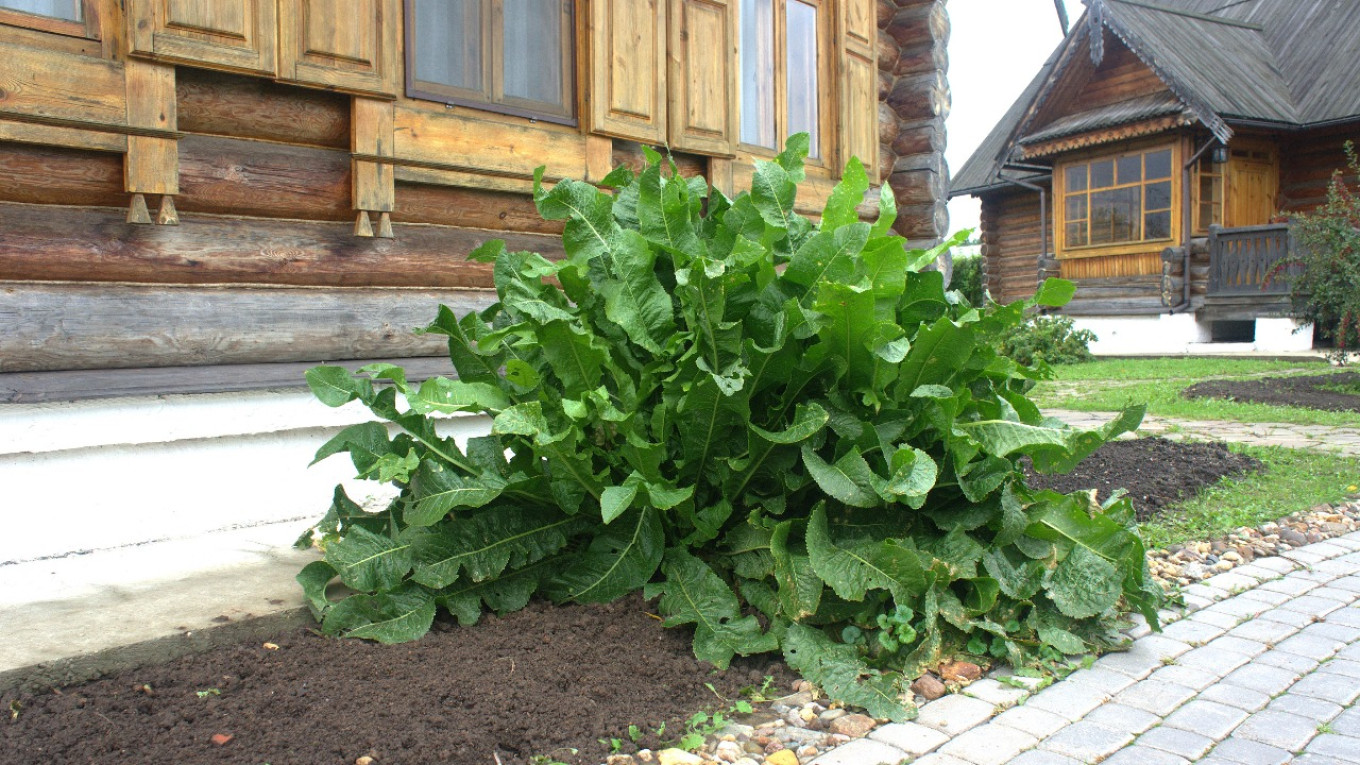
How was horseradish used? The famous early writer on Russian food Vasily Lyovshin gives a recipe typical for the end of the 18th century, in which horseradish is the key ingredient in spicy sauces. “Bring a [cleaned] suckling pig to a boil in water with salt, onion, dill and thyme; [when done] place it on a dish and cover it with horseradish mixed with sour cream. Or roast a suckling pig, carve it, put it on a serving plate and pour horseradish in vinegar over it.”
But even much later, in the 19th century, horseradish was an indispensable attribute of the Russian table. For example, in 1856 a correspondent for the magazine Moskvityanin lists some Moscow dishes: “Ham, cabbage-smothered goose, marinated meat with onions, pork head with horseradish.”
But where did the horseradish used in Moscow cuisine come from? Largely from the small town of Suzdal (200 kilometers from Moscow), which for many centuries has been the Russian capital of horseradish. Here they harvest the strongest and most flavorful horseradish in all of Russia. At first it was cultivated and sold without much thought, but by the end of the 19th century it was a very good business.
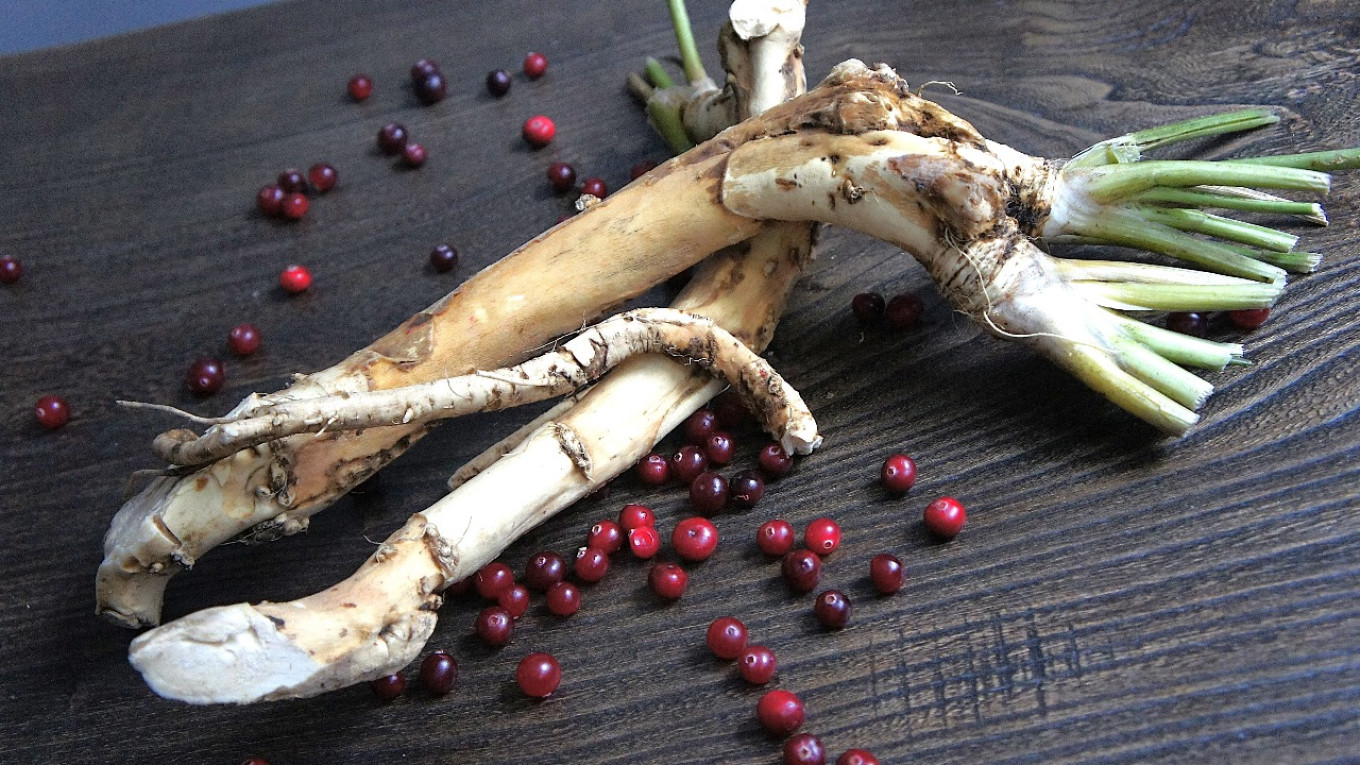
In Suzdal they traditionally begin digging up horseradish roots in October, around the feast day of the Intercession of Mother of God on October 14. It was thought that horseradish dug up at this time would be of the best quality, but it was not always possible to dig it up: sometimes frost and snow had already covered the ground, and then the work had to be postponed until spring.
Local residents managed to turn horseradish from a standard plant in vegetable gardens into a serious money-maker. In the 19th century they sent their horseradish crop to St. Petersburg and Moscow. The demand greatly exceeded the supply, especially for best varieties. Prices for it were always rising, and the production of Suzdal horseradish flourished. For example, in 1862 alone, 20,000 poods (320 tons) of raw, dried and powdered horseradish were shipped from Suzdal.
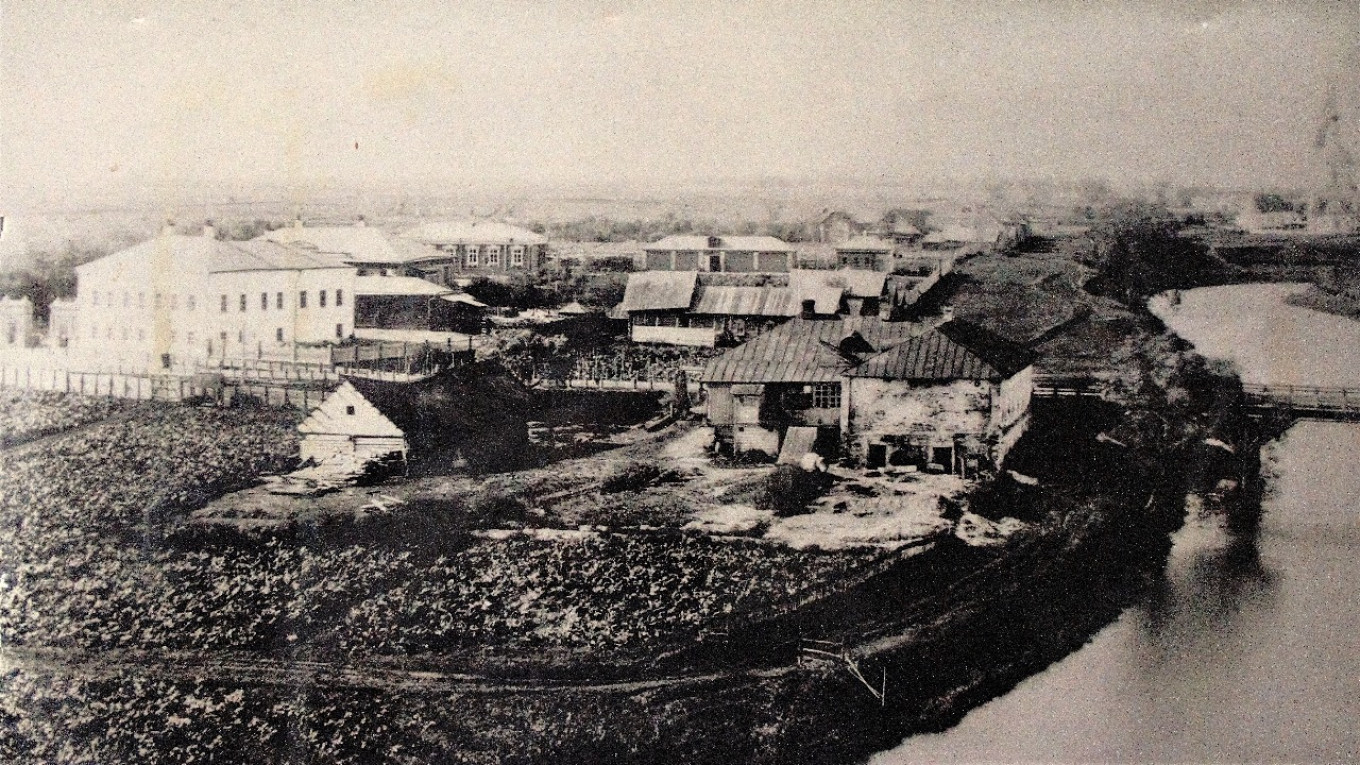
In good years, of which there were many, the proceeds from the sale of horseradish alone covered the costs of cultivating all the vegetable gardens and orchards. That’s because the price of horseradish was virtually nothing: just dig it up and clean it. It did not require any other care and fit perfectly in vegetable beds between onions and cucumbers.
Only a good, solid root was sold raw; the small roots went to local grinders for processing. They ground the roots and then sold it at markets in powder form.
Small vegetable gardeners sold horseradish to traders, who stored it in damp cellars over the winter so it wouldn’t dry out. And in the early spring a supplier of His Majesty's Court, the merchant Usov, arrived them from St. Petersburg. He even sold horseradish abroad, especially to French restaurants. The importance of this crop for the city is evidenced by the data of the provincial Statistical Committee. In 1861 there were only 15 factories in Suzdal: 3 tanneries, 4 candle factories, 5 brick factories and 3 “horseradish factories” (where horseradish was pounded and grinded).
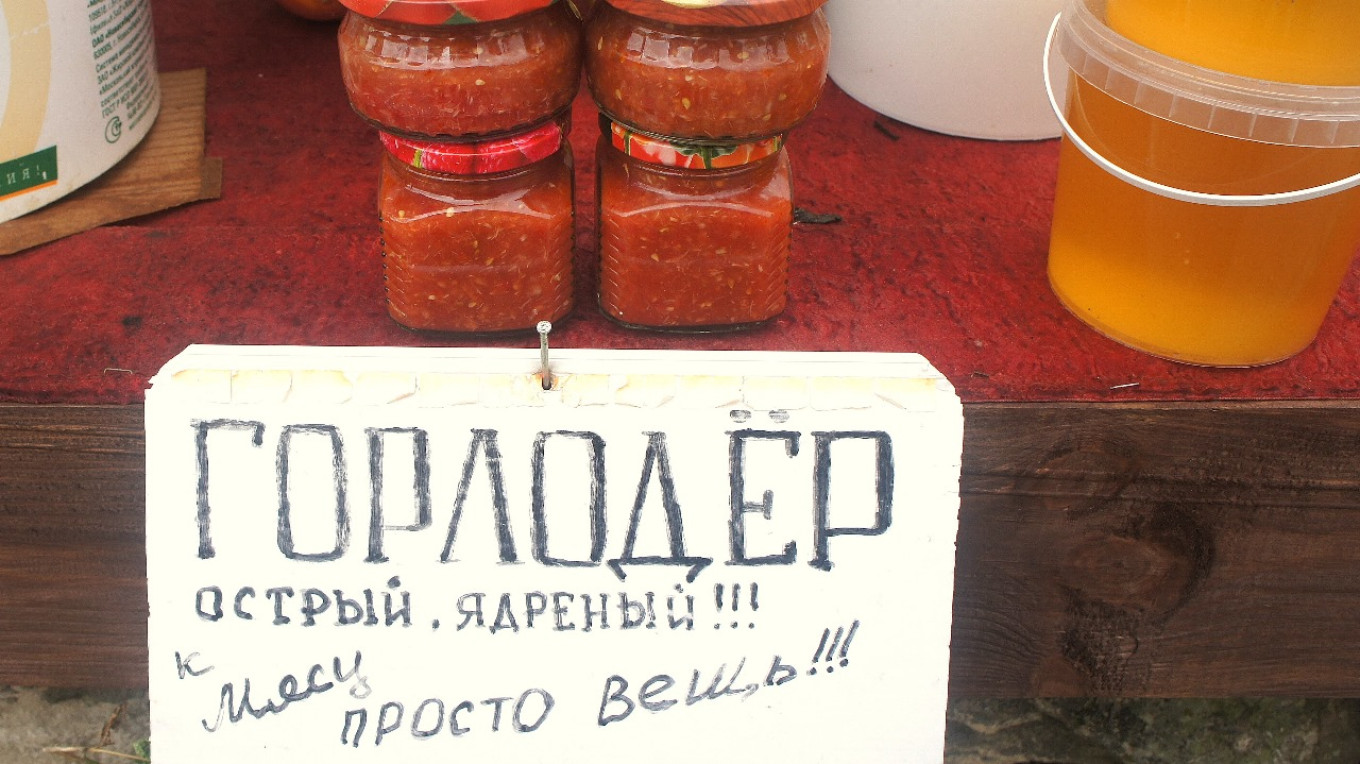
In the Soviet era new ways of using horseradish appeared. In the early post-war years tomatoes were not part of everyday meals. Even in Suzdal, a city of vegetable gardeners, tomato cultivation began en masse only in the 1960s. That’s probably when experiments led to the creation of khrenovina (lil' old horseradish), khrenodyor (horseradish stripper) or gorlodyor (throat stripper). These are all names of a very spicy sauce made with tomatoes, horseradish root, garlic and salt blended together and passed through a meat grinder. This fiery mixture lasts a long time — easily until the next season.
Our old acquaintance, the Suzdal farmer Pavel Devyatov, treated us to horseradish made according to his recipe. “This is Kishleyevsky horseradish (from the village of Kishleyevo near Suzdal),” he said. “The recipe is very simple. You grate it, add a little water. Let it stand for 2-3 hours. Then you pour sour cabbage brine over it.” He said horseradish was always added to all the canned food, including cucumbers and tomatoes. “Horseradish leaves were added to everything. Chopped horseradish leaves were also used to make herbal seasoning. And grated horseradish was always added to borscht and soups.”
Horseradish is the ideal condiment to meat. In summer the best annd easiest way to cook meat is over an open fire as shashlik. But in winter you have to use more skill to cook it on the stove or in the oven. Meat cooked in a clay pot is always delicious, but you can also turn out excellent meat in a heavy-bottomed pot on the stove. Try the recipe below. It won’t take long or cost much. The result will surprise you: delicious, tender and flavorful beef.
Horseradish Beef
Ingredients
- 1 kg (2.2 lb) beef (chuck)
- 40 g (1.5 oz or 2 ¾ Tbsp) clarified or regular butter
- 200 g (7 oz) grated horseradish
- 2 bay leaves
- 700 ml (3 c) red dry wine or beer
- salt, freshly ground black pepper
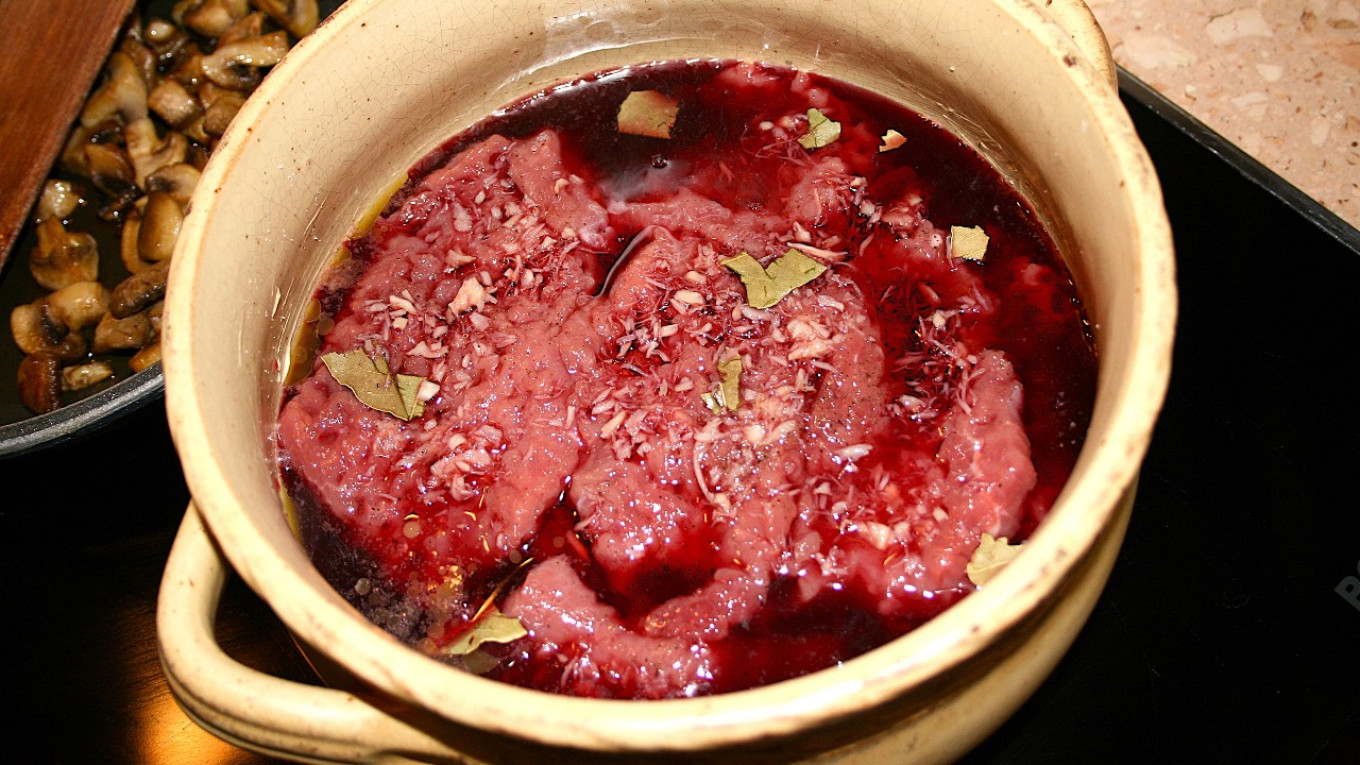
Instructions
- Preheat the oven to 200°C/390°F.
- Cut the meat into serving pieces, pound out lightly, salt and pepper.
- Grate horseradish root on a coarse grater — this is much easier than on a fine grater and won’t cause as many tears. Or if you can find it, buy freshly grated horseradish without any additives.
- Put a spoonful of clarified or regular butter in the pot and then lay the meat in layers, covering each layer with horseradish — about half a tablespoon.
- Add bay leaf and cover completely with wine.
- Put the pot with meat in the oven.
- After 15 minutes, turn down the temperature to 170°C/340°F.
- Cook the meat for 1½ to 2 hours. It is done when the meat is very tender.
- Let it rest before serving with any vegetable along with boiled, baked or fried potatoes.
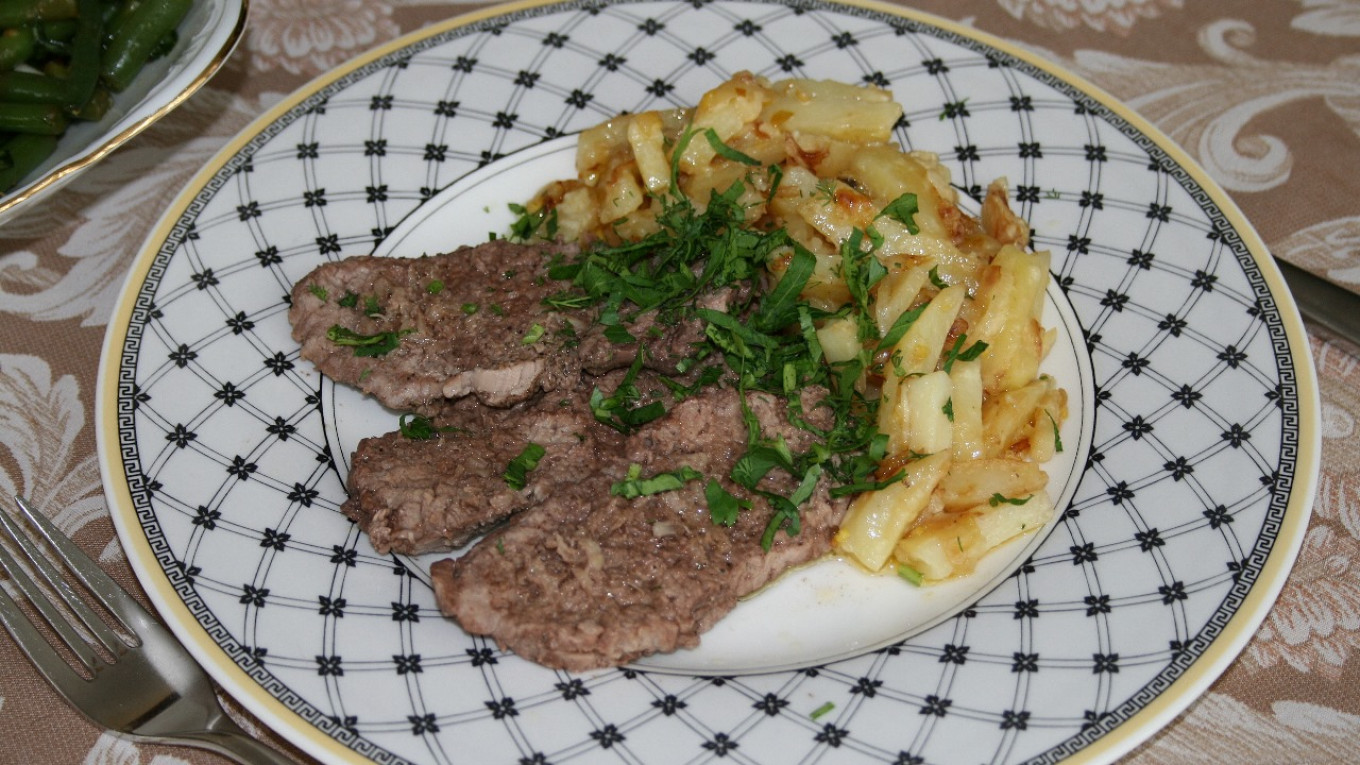
A Message from The Moscow Times:
Dear readers,
We are facing unprecedented challenges. Russia's Prosecutor General's Office has designated The Moscow Times as an "undesirable" organization, criminalizing our work and putting our staff at risk of prosecution. This follows our earlier unjust labeling as a "foreign agent."
These actions are direct attempts to silence independent journalism in Russia. The authorities claim our work "discredits the decisions of the Russian leadership." We see things differently: we strive to provide accurate, unbiased reporting on Russia.
We, the journalists of The Moscow Times, refuse to be silenced. But to continue our work, we need your help.
Your support, no matter how small, makes a world of difference. If you can, please support us monthly starting from just $2. It's quick to set up, and every contribution makes a significant impact.
By supporting The Moscow Times, you're defending open, independent journalism in the face of repression. Thank you for standing with us.
Remind me later.



